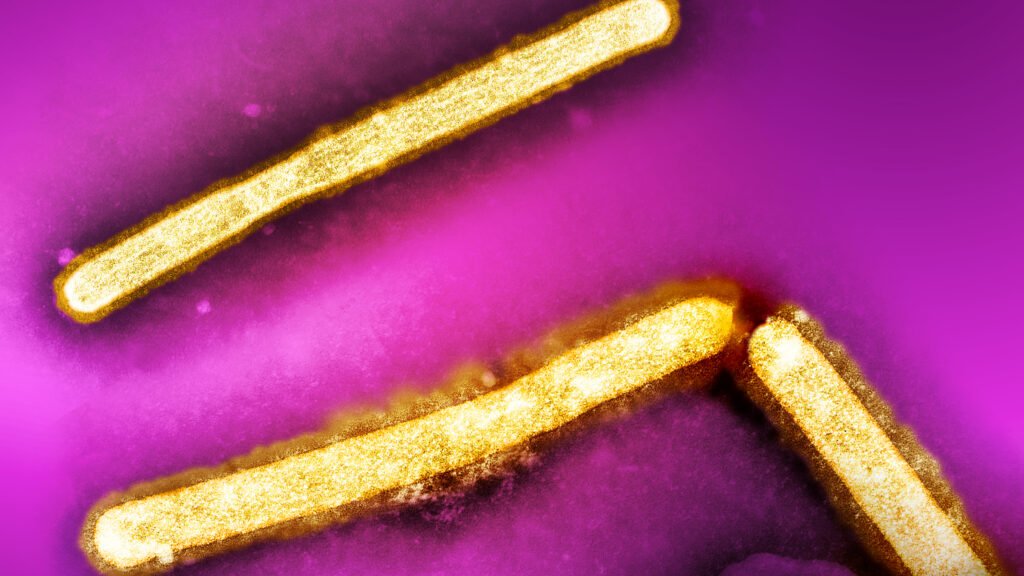The United States has experienced its first fatal case of H5N1 bird flu, a person from Louisiana who contracted the virus from infected chickens and wild birds in a backyard flock. The Louisiana Department of Health reported the death on Monday, revealing that the individual was over the age of 65 and had underlying medical conditions. The specifics of these conditions and whether they increased the person’s risk of developing a severe infection from influenza remain unclear.
The Centers for Disease Control and Prevention (CDC) emphasized that while the incident is tragic, it does not alter their assessment of the current risk posed by the virus. The CDC stated that the risk to the general public remains low, despite this unfortunate event.
Flu experts cautioned that while this is the first death from H5N1 in the United States, it is likely not the last. Richard Webby, a flu virologist at the World Health Organization’s Collaborating Center for Studies on the Ecology of Influenza in Animals, expressed concern that more fatal cases may occur if the H5 virus continues to circulate in birds and dairy cattle.
Angela Rasmussen, a virologist studying emerging infectious diseases, echoed these sentiments, indicating that it was only a matter of time before a fatal case occurred. She emphasized that the H5N1 virus has claimed over 450 lives globally since 2003 but that this is the first death from the virus in North America.
Recent analysis of H5N1 cases in the United States published in the New England Journal of Medicine highlighted the mildness of most infections, particularly among young, healthy farmworkers. However, experts caution against underestimating the severity of the virus, as demonstrated by the fatal case in Louisiana, which underscores the potential for severe illness.
While the virus has primarily caused mild symptoms in the United States, scientists warn against assuming that it is harmless. Michael Osterholm, director of the University of Minnesota’s Center for Infectious Disease Research and Policy, emphasized the importance of monitoring the virus for any signs of adaptation that could facilitate person-to-person transmission, a key factor in the emergence of a pandemic.
Analysis of virus samples from the Louisiana patient revealed mutations that enhance the virus’s ability to bind to cells in the human upper respiratory tract. Similar mutations were found in a teenager in Canada who also suffered severely from H5N1 but is now recovering. Despite these concerning developments, health officials have not identified any additional cases among contacts of the deceased individual.
The death of the Louisiana patient serves as a stark reminder of the potential threat posed by H5N1 bird flu and underscores the importance of continued vigilance and research to mitigate the risks associated with this deadly virus. The recent outbreak of H5N1 avian influenza has raised concerns among health authorities worldwide, including in British Columbia. Despite the detection of the virus in a young girl, there has been no evidence to suggest that she has transmitted it to anyone else. This is reassuring news, as H5N1 has long been a top priority for pandemic planners due to its potential to cause widespread illness and death.
The spread of H5N1 in wild birds has facilitated its movement across the globe, and recent strains of the virus have demonstrated the ability to infect a variety of mammal species, including dairy cows. In late March, an outbreak of H5N1 was detected in cows, leading to infections in over 900 herds across 16 states. Alarmingly, 40 of the 66 human cases reported in 2024 were among farmworkers who had been exposed to infected cows.
The impact of H5N1 on both animal and human health underscores the importance of robust surveillance and response measures. Health authorities must remain vigilant in monitoring the spread of the virus and implementing appropriate control measures to prevent further transmission. By working together to address the threat of H5N1, we can protect both animal and human populations from the devastating effects of this dangerous virus.


